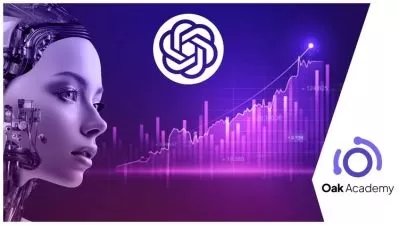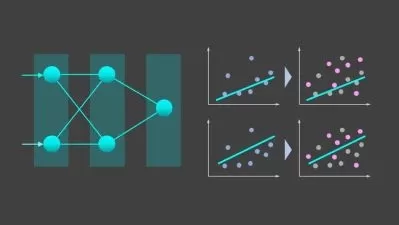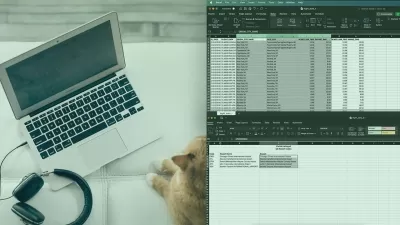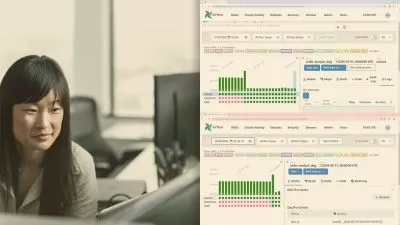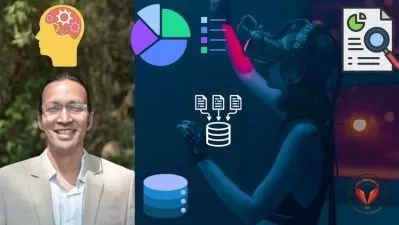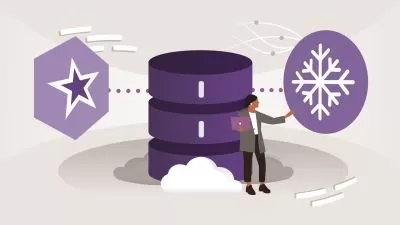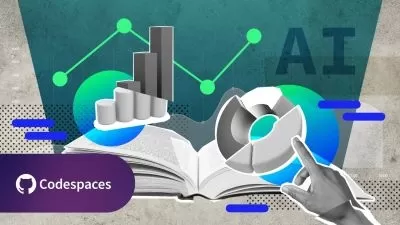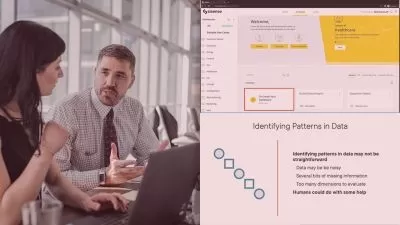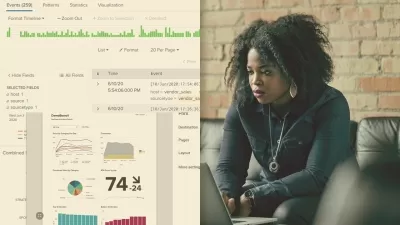About Data ScienceLearn More
Data science application is an in-demand skill in many industries worldwide — including finance, transportation, education, manufacturing, human resources, and banking. Explore data science courses with Python, statistics, machine learning, and more to grow your knowledge. Get data science training if you’re into research, statistics, and analytics.
Sort by:
Sorting
The newest
Most visited
Course time
Subtitle
Frequently asked questions about Data Science
We have more data than ever before. But data alone cannot tell us much about the world around us. We need to interpret the information and discover hidden patterns. This is where data science comes in. Data science uses algorithms to understand raw data. The main difference between data science and traditional data analysis is its focus on prediction. Data science seeks to find patterns in data and use those patterns to predict future data. It draws on machine learning to process large amounts of data, discover patterns, and predict trends. Data science includes preparing, analyzing, and processing data. It draws from many scientific fields, and as a science, it progresses by creating new algorithms to analyze data and validate current methods.
Data Scientists use machine learning to discover hidden patterns in large amounts of raw data to shed light on real problems. This requires several steps. First, they must identify a suitable problem. Next, they determine what data are needed to solve such a situation and figure out how to get the data. Once they obtain the data, they need to clean the data. The data may not be formatted correctly, it might have additional unnecessary data, it might be missing entries, or some data might be incorrect. Data Scientists must, therefore, make sure the data is clean before they analyze the data. To analyze the data, they use machine learning techniques to build models. Once they create a model, they test, refine, and finally put it into production.
Python is the most popular programming language for data science. It is a universal language that has a lot of libraries available. It is also a good beginner language. R is also popular; however, it is more complex and designed for statistical analysis. It might be a good choice if you want to specialize in statistical analysis. You will want to know either Python or R and SQL. SQL is a query language designed for relational databases. Data scientists deal with large amounts of data, and they store a lot of that data in relational databases. Those are the three most-used programming languages. Other languages such as Java, C++, JavaScript, and Scala are also used, albeit less so. If you already have a background in those languages, you can explore the tools available in those languages. However, if you already know another programming language, you will likely be able to pick up Python very quickly.
This answer, of course, varies. The more time you devote to learning new skills, the faster you will learn. It will also depend on your starting place. If you already have a strong base in mathematics and statistics, you will have less to learn. If you have no background in statistics or advanced mathematics, you can still become a data scientist; it will just take a bit longer. Data science requires lifelong learning, so you will never really finish learning. A better question might be, "How can I gauge whether I know enough to become a data scientist?" Challenge yourself to complete data science projects using open data. The more you practice, the more you will learn, and the more confident you will become. Once you have several projects that you can point to as good examples of your skillset as a data scientist, you are ready to enter the field.
It is possible to learn data science on your own, as long as you stay focused and motivated. Luckily, there are a lot of online courses and boot camps available. Start by determining what interests you about data science. If you gravitate to visualizations, begin learning about them. Starting with something that excites you will motivate you to take that first step. If you are not sure where you want to start, try starting with learning Python. It is an excellent introduction to programming languages and will be useful as a data scientist. Begin by working through tutorials or Udemy courses on the topic of your choice. Once you have developed a base in the skills that interest you, it can help to talk with someone in the field. Find out what skills employers are looking for and continue to learn those skills. When learning on your own, setting practical learning goals can keep you motivated.
The jury is still out on this one. Some people believe that it is possible to become a data scientist without knowing how to code, but others disagree. A lot of algorithms have been developed and optimized in the field. You could argue that it is more important to understand how to use the algorithms than how to code them yourself. As the field grows, more platforms are available that automate much of the process. However, as it stands now, employers are primarily looking for people who can code, and you need basic programming skills. The data scientist role is continuing to evolve, so that might not be true in the future. The best advice would be to find the path that fits your skillset.
A data scientist requires many skills. They need a strong understanding of statistical analysis and mathematics, which are essential pillars of data science. A good understanding of these concepts will help you understand the basic premises of data science. Familiarity with machine learning is also important. Machine learning is a valuable tool to find patterns in large data sets. To manage large data sets, data scientists must be familiar with databases. Structured query language (SQL) is a must-have skill for data scientists. However, nonrelational databases (NoSQL) are growing in popularity, so a greater understanding of database structures is beneficial. The dominant programming language in Data Science is Python — although R is also popular. A basis in at least one of these languages is a good starting point. Finally, to communicate findings, data scientists require knowledge of visualizations. Data visualizations allow them to share complex data in an accessible manner.
The demand for data scientists is growing. We do not just have data scientists; we have data engineers, data administrators, and analytics managers. The jobs also generally pay well. This might make you wonder if it would be a promising career for you. A better understanding of the type of work a data scientist does can help you understand if it might be the path for you. First and foremost, you must think analytically. Data science is about gaining a more in-depth understanding of info through data. Do you fact-check information and enjoy diving into the statistics? Although the actual work may be quite technical, the findings still need to be communicated. Can you explain complex findings to someone who does not have a technical background? Many data scientists work in cross-functional teams and must share their results with people with very different backgrounds. If this sounds like a great work environment, then it might be a promising career for you.





